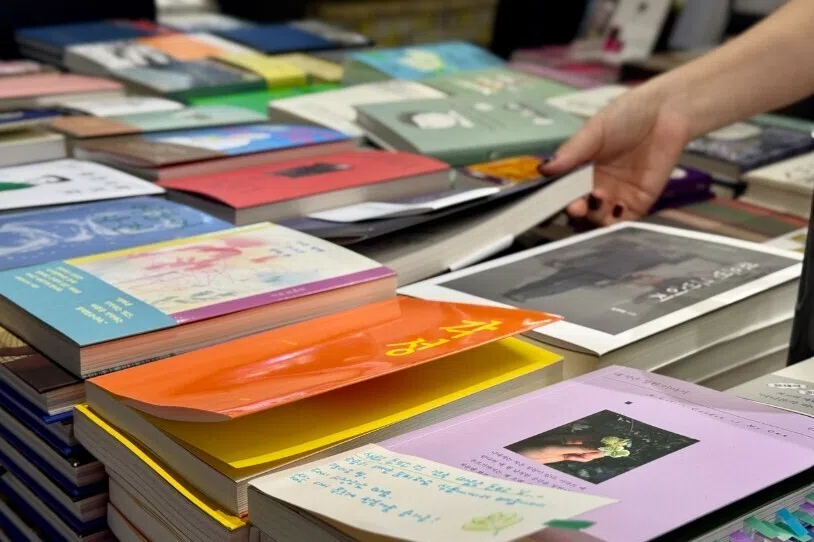Why South Koreans keep buying books they admit are shallow
Sign up now: Get ST's newsletters delivered to your inbox

Customers browse the essay section at Kyobo Book Centre in Gwanghwamun, Seoul.
PHOTO: THE KOREA HERALD/ASIA NEWS NETWORK
Follow topic:
SEOUL – When I Want To Die But I Want To Eat Tteokbokki
Classified as a Korean essay by local bookstores, it stood out because it offered a vulnerable personal narrative.
Seven years on, the same category looks very different. Bookstores across South Korea showcase row after row of pastel-coloured volumes repeating variations of the same lines:
You Are Enough Just By Existing.
Even Standing Still Is Moving Forward.
Happiness Lives In Ordinary Days.
These are what the industry loosely calls healing essays. They are short, comprising brief paragraphs or fragments and designed for skimming. Unlike memoirs anchored in life experience, they function less as narratives and more as collections of quotable phrases.
And they sell.
In the monthly bestseller charts of South Korea’s largest bookstore chains – Kyobo Book Centre, Yes24 and Aladin – at least two or three of the top 10 titles are these healing essays.
According to Yes24’s annual report, more than 4,200 essay titles were released in 2023, almost double the figure in 2013. Unit sales in the Korean essay category have grown by more than 30 per cent since 2019, while other categories such as non-fiction and translated literature have stagnated.
“It’s the safest bet for publishers,” said a senior editor at a major local publishing house, speaking on condition of anonymity.
“You don’t need characters, research or story. What matters is whether a sentence looks good underlined with a highlighter. Marketing teams literally ask, ‘Can this be photographed for Instagram?’ That is the bar now.”
For readers, the appeal is rarely about literary quality. It is about what the act of buying the bound tome symbolises.
“I don’t expect them to change my life,” said a 34-year-old pharmacist known only as Ham, who has bought a few such books. “I know the words are vague. But when I buy one, it feels like I gave myself permission to rest. Even if I read only a few pages, I own the gesture. That feels important.”
That gesture does matter in South Korea, and buying a book still carries cultural legitimacy.
As sociologist Lee Jung-yeon of Seoul Women’s University explained: “Books remain objects of seriousness in Korea. So, when people pay about 16,000 won (S$14.70) for an essay book, they are not just buying sentences. They are buying the right to tell themselves, ‘I am caring for myself in a respectable way.’”
This helps explain why readers may not feel deceived even when they recognise a lack of substance. The trade is conscious. They know the pages contain platitudes, but the purchase – just expensive enough to feel weighty – delivers a socially sanctioned form of self-care.
Psychologists see both benefit and risk.
Professor of clinical psychology at Yonsei University Lee Dong-gwi said: “When people are under extreme stress, they don’t necessarily want rigorous analysis. They want words that can be absorbed in one glance, almost like mantras. That can reduce a sense of isolation. But quick comfort should not be confused with genuine recovery. The danger is when people expect these lines to serve as therapy.”
Not all readers are forgiving.
“They’re like fast food for the mind,” said a 26-year-old graduate student at Kyung Hee University known only as Yoon.
“Easy to swallow, instantly gratifying, marketed as nourishing even when they’re mostly empty calories. I don’t blame people for reaching for them, but I wonder what it means if this becomes our main diet.”
Publishers acknowledge this demand openly.
“It is the easiest genre to scale,” the anonymous editor added. “One influencer with 200,000 Instagram followers can be turned into an author in months. The book doesn’t need depth. His or her audience supplies the market.” THE KOREA HERALD/ASIA NEWS NETWORK

